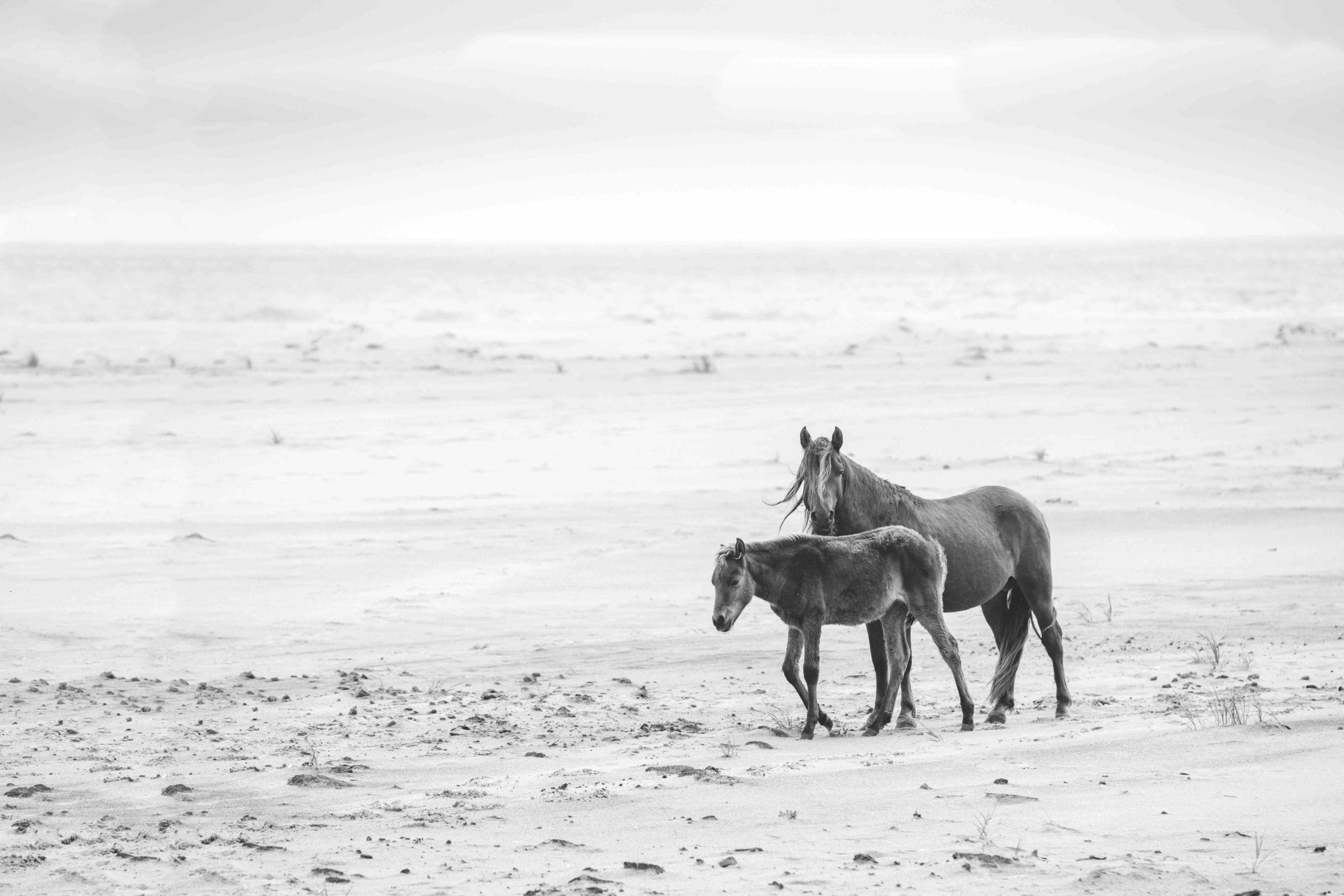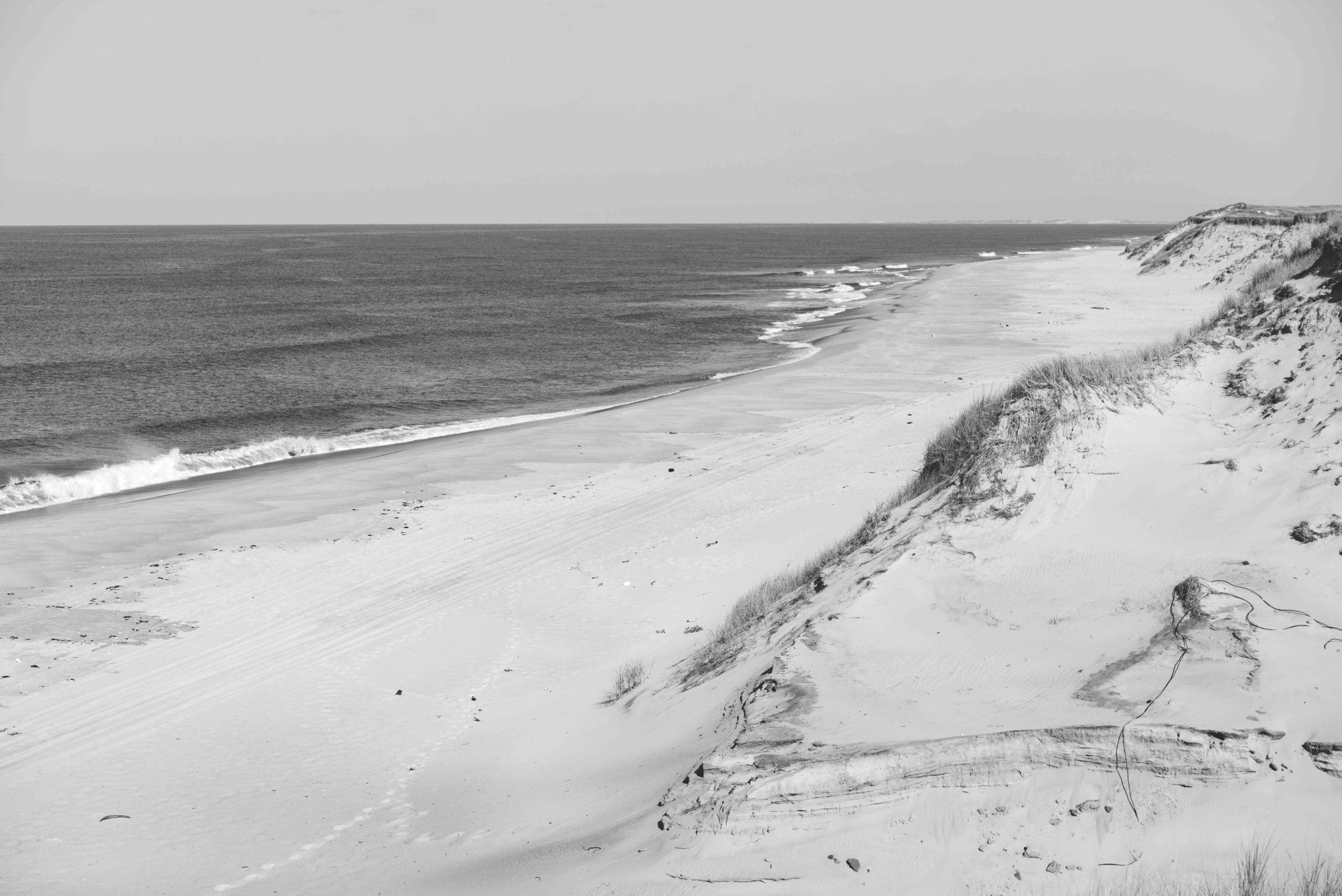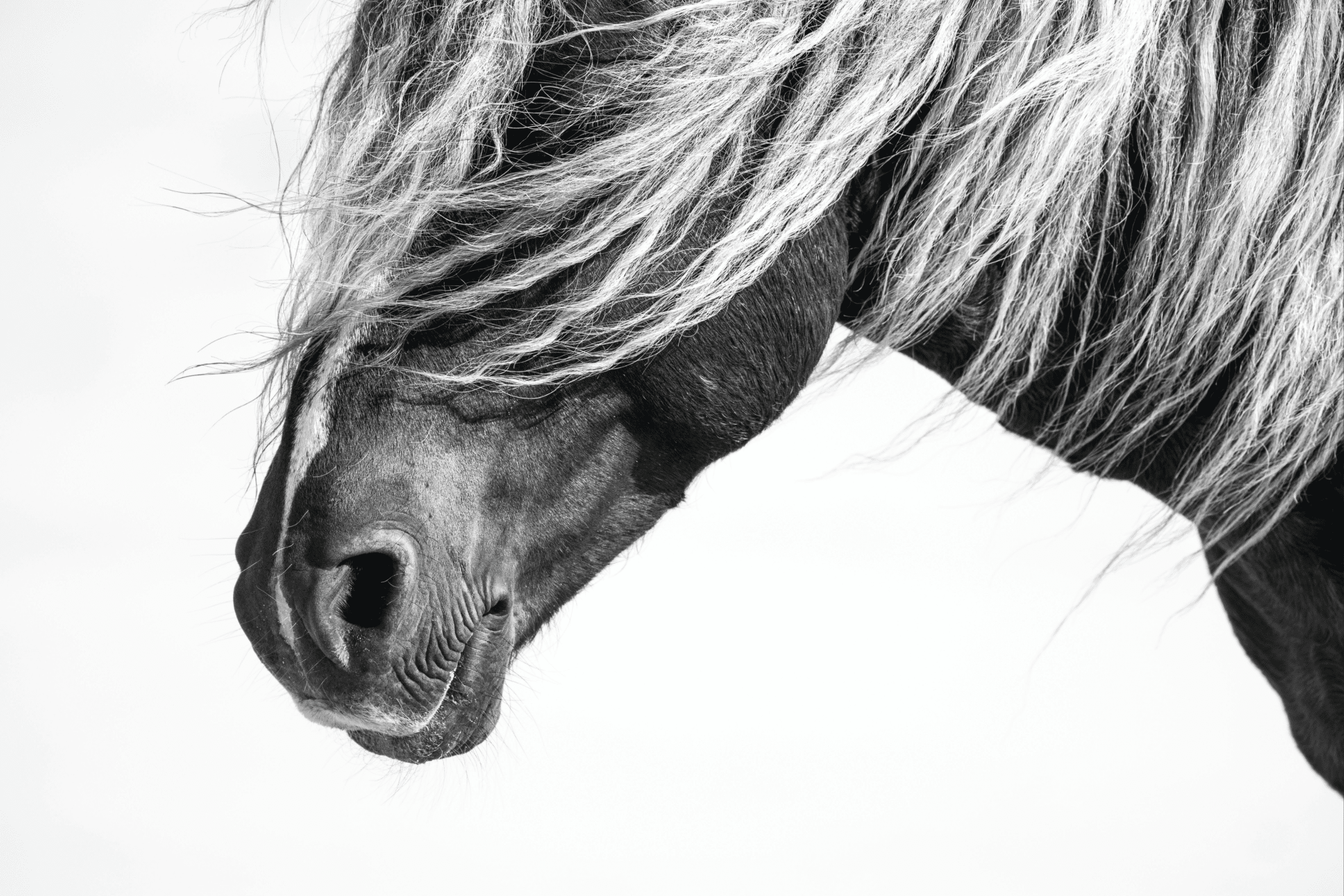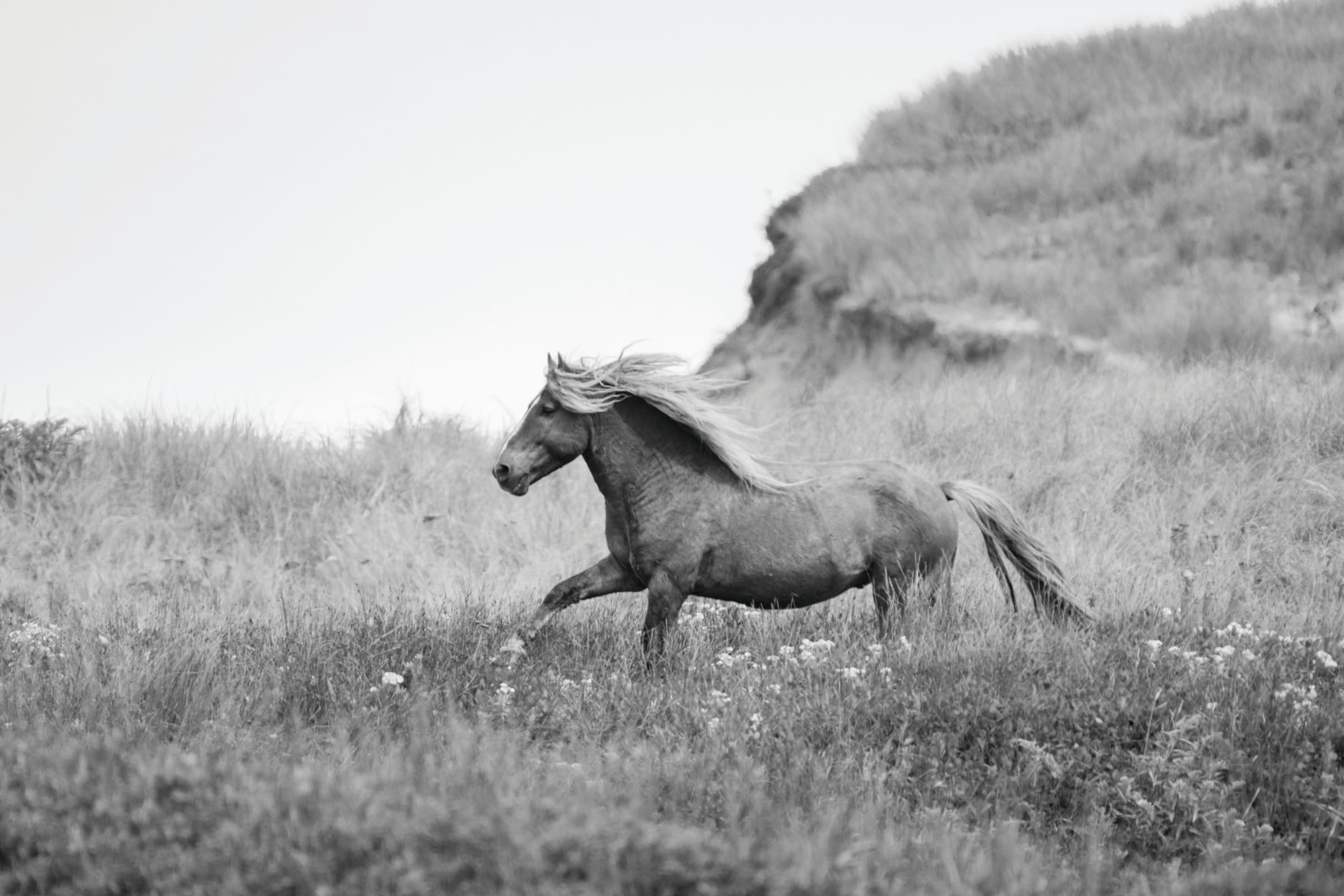The deadliest place in the Atlantic is slender, breathtaking and cloaked in cyan green. Its waters have swallowed some 350 ships, countless sailors, tons of silver and gold, and royal luggage from the likes of Marie Antoinette. For centuries, this land has remained virtually inhospitable to human life. And yet, one spirit persists: the wild horses. Sable Island is a fable. It’s a distorted reality. And there’s no place on earth like it.
Situated 200 miles off the shore of Nova Scotia, Canada, the peach-tinted sand dune floats in the middle of nowhere, attached to nothing. Sable is less than a mile wide at its waist and 25 miles long. Not one tree exists on its landscape. Beach grass feeds the resident horses. The absence of soil and stones makes this one of the most unique ecosystems on earth. A forsaken shapeshifter, Sable morphs with the tides and gales. Dunes erode at the same time they’re being built.

Photography by Sandy Sharkey
Thanks to its untamed mystery, the isle is powerful and hopelessly romantic. Artists become entranced by its undeniable mysticism and its wild characters. “To me, Sable Island is the explorer’s dream,” explains photographer Drew Doggett. “I love the weight of Sable’s mythology; when you’re on the island, you can feel the presence of its history. The only way to interact with the island is the way it allows you to do so. As much as I set myself up for the photos I have in mind, the island has its own plans.”
He’s right. Sable is an enigma. And part of its appeal is the incredible effort required to get there. Since 2013 when the isle became a national park reserve, Parks Canada has carefully managed travel requests from tour operators, who bring visitors during the short season from June to October. Tourists arrive by watercraft, helicopter or small plane with eight to 10 others. Timing is everything, as the unpredictable weather controls who comes and goes from this wild dune of wind and water.
Once you get there, you can’t stay overnight. And when you leave, you can’t take anything with you. If you find, say, a Coke bottle from 1965 along the shoreline, it has to stay. “When you leave, you see your footprints in the sand,” explains wild horse photographer Sandy Sharkey. “But then within seconds, the breeze covers them up. It’s like you were never there.”

Sable was first recorded on a map in 1502, although it’s unclear who discovered it. Some historians say it was the Portuguese, who fished these waters, while others posit it was the Basques or the Vikings. Settlers tried to colonize the isle in the 1550s, but they ultimately abandoned those plans — along with their animals and belongings — when conditions became unbearable.
The nickname “Graveyard of the Atlantic” is a fitting one. Some 350 shipwrecks have been recorded, the most notable being the 1737 wreck of the Catherine, in which 98 souls perished. The island’s wrath is two-fold. First, it rests upon an unseen continental shelf the size of the Grand Canyon. Second, its unique positioning creates a terrifying vortex of the Labrador Current and the Gulf Stream that picks up ships and sets them on sandbars like plastic toys.
There’s one person who knows Sable best: naturalist Zoe Lucas, who’s been compared to Jane Goodall. Now the president of the Sable Island Institute, she first visited in the seventies. “As soon as I stepped off the plane, I was swept away,” she notes. For four decades, she was one of the only people living on the isle full-time, studying the horses and working on dune restoration. Although she no longer calls Sable home, she visits whenever possible.

The island remains inhospitable for a variety of reasons: Farming isn’t practical without proper soil. Rivers don’t exist, nor do brooks of fresh water. Winter’s cold threatens the existence of any livestock, and fog and quicksand are serious summer perils. Finally, waste disposal is nearly impossible.
So what was it like living on this unlivable island? “Endless — I was constantly seeing and learning,” Lucas says. Passionate about stabilizing environments compromised by human activity, she stayed in an isolated field camp to monitor and care for the isle. She lived an hour’s walk from the main station, without power or running water. Supplies were flown in every two weeks, weather permitting.
“I find the island fascinating,” Lucas explains. “It’s remarkable and unusual. An answer to a question opens up four more. In my entire adult life, I’ve never been bored.” She spent most of her 40 years on Sable documenting the behaviors of the horses to better understand how they could survive the treacherous conditions. And her stories are akin to The Black Stallion.

Lucas followed one stallion from foal hood to death. He was badly injured in a fight with another stallion in his younger years, losing an eye. She wasn’t sure he would survive, but he came back with a vengeance and built one of the strongest bands of horses she ever recorded. Lucas named him Gem, after the horse in the children’s book Pit Pony by Joyce Barkhouse.
Horses are thought to have first arrived on Sable in the 1750s by ship, captured by the British from the Acadians. Their unique characteristics — bulging noses, muscular shoulders, low-set tails — resemble a blend of the North African Barb, the Canadian horse and equines from early American colonies. Now protected by the government, the island population has ranged from 150 to 500 in recent years, with family bands made up of eight to 10 horses.
Sable is their home and all they know, from birth to death. When their time is up, their bodies become part of the blowing sand. On the island, horses pay humans no mind. If you’re roaming along the sand road, it’s not uncommon for a stallion to plod by without taking notice, his long mane scraping tufts of sandwort. “These horses are completely, from the ground up, Sable Island,” photographer Sharkey muses. “They are the sand, the surf, the sun, the wind. They absolutely symbolize freedom.”

The horses’ fate is ever shapeshifting, just like the isle itself. Sable is subject to natural erosion thanks to the ocean, with peak elevation sinking 25 feet over the past century. The opportunities to visit are dwindling, too. “Embracing natural change is part of being on Sable Island,” Lucas says. “Working and living on Sable, everything is about the weather. Everything you do is built around the tides.”
There was once a light keeper’s house on Sable, but it’s since been buried in sand. Ships no longer run aground the island. Humans come and go; seabirds cry in the gales. And the dunes endure, despite Mother Nature’s wrath. Nobody really knows if Sable is growing or shrinking, but ultimately, it may be doomed to disappear. As most mysteries go, one day, we may wonder if Sable Island and its wild horses ever existed at all.


